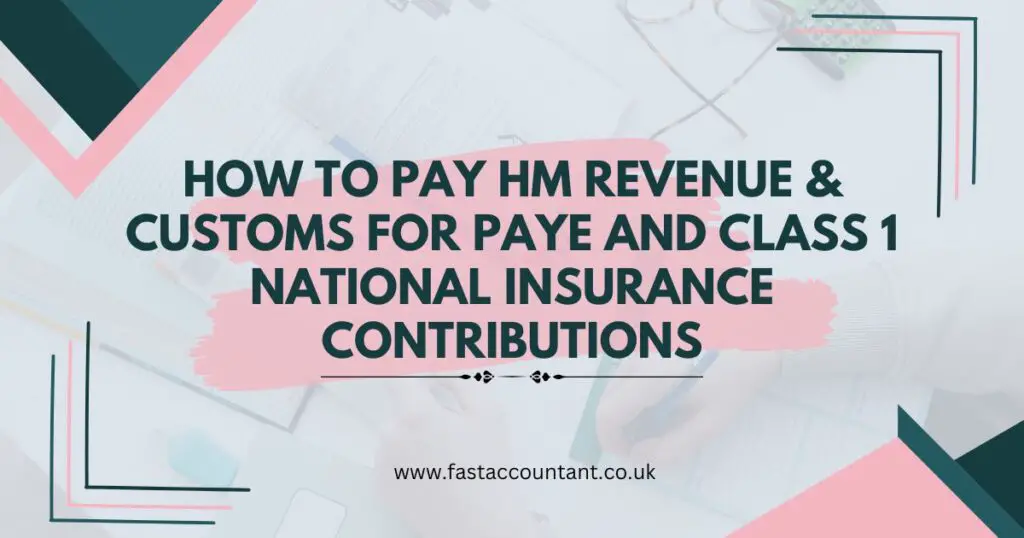
Have you ever wondered about the best way to pay HM Revenue & Customs for your PAYE and Class 1 National Insurance Contributions? This guide will lead you through the various methods available, ensuring that your payment process is smooth, efficient, and stress-free. Paying HMRC PAYE correctly and on time is essential to avoid any penalties and to keep your records in good standing. Let’s explore the different electronic and postal payment options recommended by HMRC.
What is PAYE and Class 1 National Insurance Contributions?
PAYE (Pay As You Earn) is a system used by HMRC to collect Income Tax and National Insurance from employment. Class 1 National Insurance Contributions are paid by both employers and employees. Keeping up with these payments is crucial for both legal compliance and avoiding potential fines.
Electronic Payment Methods
Paying HMRC PAYE electronically is the preferred option. It is secure, fast, and convenient. Below are some of the electronic payment methods you can use.
Direct Debit
Setting up a Direct Debit is a convenient way to ensure your payments are made automatically without the need for manual transactions each time.
- Complete a Direct Debit instruction form: Available on the HMRC website.
- Submit the form to HMRC: Mail it to the provided address.
- Confirmation: HMRC will confirm setup and payments will be collected automatically on the due dates.
Online Debit or Corporate Credit Card
Paying HMRC PAYE by debit or corporate credit card is a fast method but be aware that credit card payments may incur a fee.
- Visit the HMRC payment portal: Navigate to the appropriate section for PAYE and National Insurance Contributions.
- Choose “Debit or Credit Card” as your payment method.
- Enter your card details: Fill in the necessary information and confirm the payment.
Bacs Direct Credit, Faster Payments, and CHAPS
These methods are often used for larger payment amounts or when needing an instant payment transfer.
- Bacs Direct Credit: Suitable for regular, bulk payments. Payments typically take three days to process.
- Faster Payments: Provided by most banks for same-day or next-day payment.
- CHAPS: Ensures same-day payment if processed by the bank’s cut-off time, suitable for high-value transactions.
Each of these methods requires your company’s online baking portal. Here’s how you proceed:
- Access your online banking.
- Select the desired payment method.
- Input HMRC’s bank details and your reference number.
- Confirm the payment.
Paying HMRC PAYE by Post
If you prefer to pay PAYE by post, you must use a payment slip and adhere to specific procedures.
Creating Your Payment Slip
Follow these steps to create a payment slip:
- Fill in the required details:
- Company name
- Your telephone number
- Accounts Office reference number
- Payment period
- Amount
- Address details
- Generate the payment slip: Use HMRC’s online tool to create the slip. Once filled, click the ‘Create payment slip’ button.
- Print the payment slip: Ensure all information is correctly displayed.
Mailing Your Payment
- Write a cheque: Payable to “HM Revenue and Customs only”.
- Include your Accounts Office reference number: Write it on the back of the cheque.
- Send the cheque and payment slip: Use the address provided:HMRC Direct BX5 5BD
Remember, you cannot use this payment slip to pay PAYE at a bank by Bank Giro.
Details Required on the Payment Slip
To ensure your payment is correctly allocated, make sure to include the following information on your payment slip:
- *Company Name
- *Contact Phone Number
- Accounts Office Reference Number: Example format is 123PA00045678*
- *Payment Period
- *Amount
- *Address Details
- First line of your address*
- Second line of your address (optional)
- Third line of your address (optional)
- Fourth line of your address (optional)
- Postcode*
Here’s a quick reference table:
| Field | Example Input |
|---|---|
| Company Name* | Your Company Name |
| Contact Phone Number* | 01234567890 |
| Accounts Office Reference Number* | 123PA00045678 |
| Payment Period* | August 2023 |
| Amount* | £5000.00 |
| First Line of Address* | 123 Example Street |
| Second Line of Address | |
| Third Line of Address | |
| Fourth Line of Address | |
| Postcode* | AB1 2CD |
Conclusion
Understanding how to pay your PAYE and Class 1 National Insurance Contributions to HMRC is crucial for every business. Electronic payment methods, such as approving payments through your online bank account, Direct Debit, or using online debit and credit card options, offer speed and convenience. For those who prefer traditional methods, paying by post is still an option, provided you use the correct payment slip and adhere to HMRC’s guidelines.
By following these detailed steps and ensuring all information is accurate, you can make your payments efficiently and avoid any unnecessary complications or penalties. So, which method will you choose to pay HMRC for your PAYE and Class 1 National Insurance Contributions?
